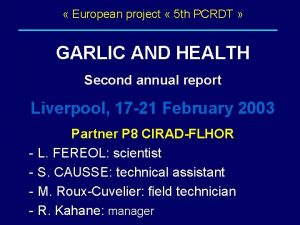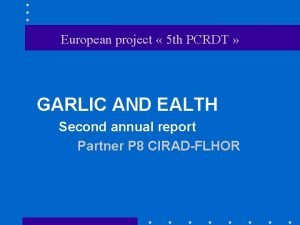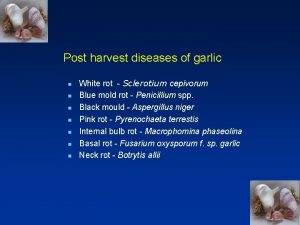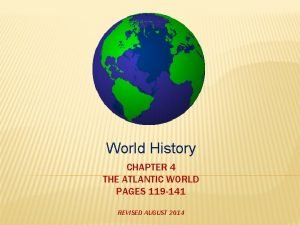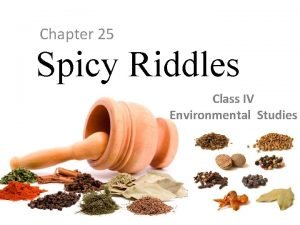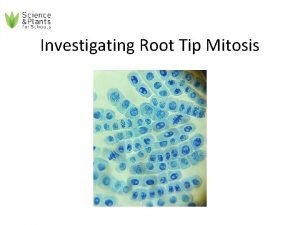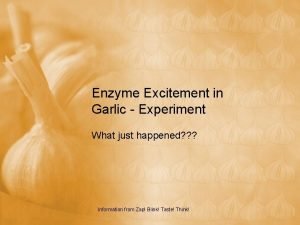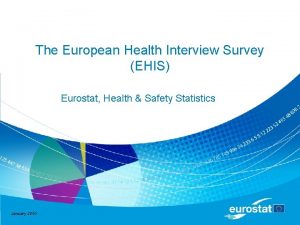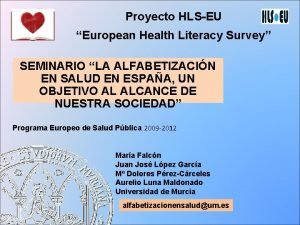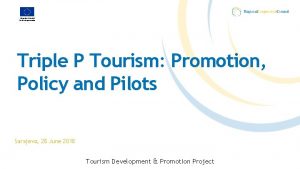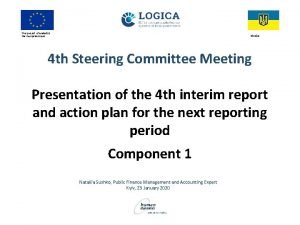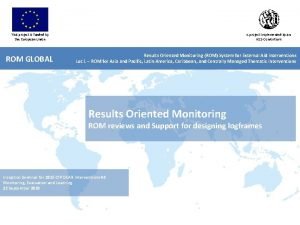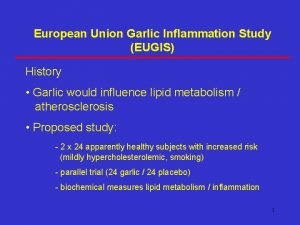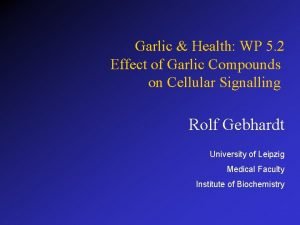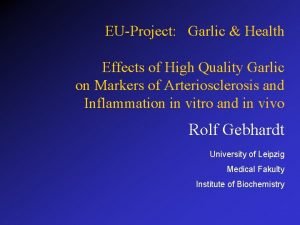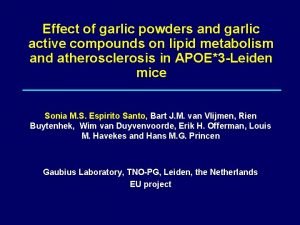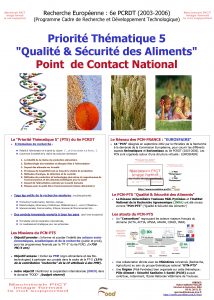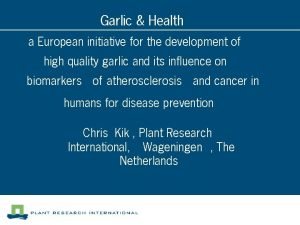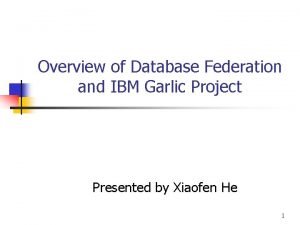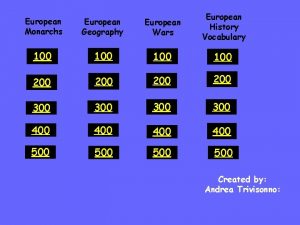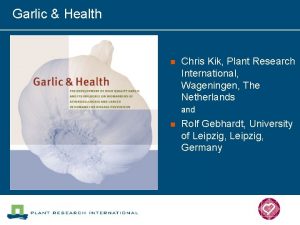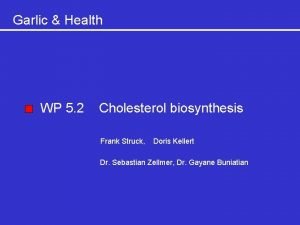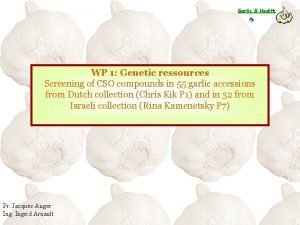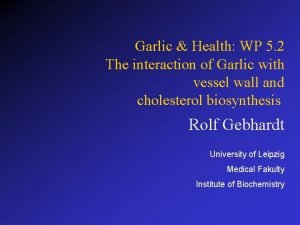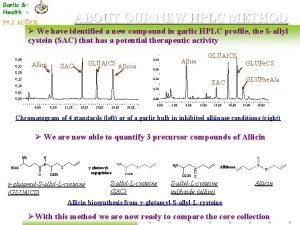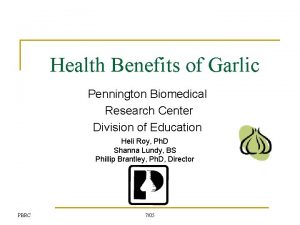European project 5 th PCRDT GARLIC AND HEALTH


















- Slides: 18

« European project « 5 th PCRDT » GARLIC AND HEALTH Second annual report Liverpool, 17 -21 February 2003 - Partner P 8 CIRAD-FLHOR L. FEREOL: scientist S. CAUSSE: technical assistant M. Roux-Cuvelier: field technician R. Kahane: manager

Objectives • Somatic embryogenesis • A mass propagation protocol, relying on in vitro regenerated plants, will be developed (by P 8). This method will be based on the production of embryogenic calluses and embryogenic cell suspension cultures from four varieties which represent different physiological groups in garlic. • Genetic characterisation of plantlets from somatic embryos • Particular attention should be paid on the genetic integrity of the regenerated plants. They will be evaluated by: • flow cytometry for determining the ploidy level (by P 8). - biochemistry (dry-matter and sulphur contents, by P 5). - molecular markers for finger printing (AFLP, by P 1). - morphological and physiological analyses

Milestones

Deliverables

Delays • Milestones – Rouge Reunion • 2 nd field evaluation (P 8) and sulphur analys will be realised in 2003 – All the others milestones are achieved • Deliverables – DP 13 • This paper will be submitted in 2003

Resarch activities during the fourth reporting period Embryogenesis, genetic characterisation – Rouge Reunion • 2 nd field evaluation (P 8), biochemistry (P 5) – Messidrôme, Morasol and Printanor from callus • 2 nd field culture and evaluation (P 9) • flow cytometry (P 8), AFLP (P 1), biochemistry (P 5) – Messidrôme, Morasol and Printanor from cell suspension • 1 st field evaluation • flow cytometry (P 8), AFLP (P 1), biochemistry (P 5) • Further improvement of the embryogenesis procedure, maintainance of the suspension cultures, histologicals studies • Bulb mass production in vitro from embryo derived plantlets and furthe development of these bulblets into bulbs

Embryogenic cell suspension culture of garlic (Allium sativum) as method for mass propagation and convenient material for genetic improvement L. Fereol*1, V. Chovelon 2, S. Causse 1 and R. Kahane 1 1. CIRAD, TA 50/PS 4, bd de la Lironde, 34398 Montpellier cedex 5, France 2. INRA, Pathologie végétale, BP 94, 84143 Montfavet, France

Materials and methods (I) • Cultivars – Rouge Reunion – Messidrome – Morasol – Printanor • Explants – Primordial leaves

Materials and methods (II) • Culture procedures – Callogenesis Basal parts of young leaves from desinfected cloves were used as explant. Embryogenic callus were obtained according to method developed by Fereol et al (2002). – Embryogenic cell suspension cultures Cell suspension cultures were initiated from less than one year old cultures of friable embryogenic calluses. These calluses were cultured in 6 X 10 ml multi-well dish containing 6 ml of liquid medium (SM, table 1) base on N 6 modified salts (chu, Wang et al. 1975). The cultures were incubated at 24 - 26°C in the dark with continuing agitation at 100 rpm.

Callus induction Morphology Histology Medium -macro-nutrients modified B 5 -2, 4 -D 0. 5 mg, IAA 0. 2 mg, NAA (Ca. Cl 2 440 mg) 0. 2 mg, Kin 0. 1 mg -micro-nutrients MS -Sucrose 60 g, phytagel 3 g -vitamines B 5 + myo-inositol 100 mg + malt extract 100 mg -prolin 230 mg

Induction of friable callus Morphology Histology Medium -macro-nutrients B 5 (Ca. Cl 2 -2, 4 -D 0. 5 mg, IAA 0. 2 mg, NAA 150 mg) 0. 2 mg, Kin 0. 1 mg -micro-nutrients MS -Sucrose 60 g, phytagel 3 g -vitamines B 5 + myo-inositol 100 mg + malt extract 100 mg -prolin 230 mg

Comparative callus induction from different cultivars Type of callus induction % Culture period (weeks) RR MES MOL PRI callus 8 93 95 95 98 Callus with embryogenic tissue 12 82 77 88 92 Friable and embryogenic callus 20 52 56 63 45 Cultivars

Cell suspension culture aspect Morphology Histology « SM » Medium -macro-nutrients N 6 -2, 4 -D 0. 3 mg, BAP 0. 1 mg -micro-nutrients H -Sucrose 45 g, phytagel 0 g -vitamines B 5 + myo-inositol 100 mg + malt extract 100 mg -glutamin 150 mg

Pack cell volume from 150 mg of friable callus of different cultivars

Growth rate of the PCV of the cell suspension culture function of the culture period

Regeneration aspect after plating on semi-solid embryo induction medium Morphology Histology « EIM » Medium -macro-nutrients N 6 -2, 4 -D 0. 1 mg, Kin 0. 5 mg -micro-nutrients H -Sucrose 45 g, phytagel 3 g -vitamines B 5 + myo-inositol 100 mg + malt extract 100 mg -glutamin 150 mg

Conversion aspect into plantlets Morphology Histology Medium -macro-nutrients BDS -micro-nutrients MS -vitamines Morel -Sucrose 20 g, agar-agar 7. 5 g

Embryogenesis features and kinetic of regeneration
 Pcrdt
Pcrdt Pcrdt
Pcrdt Allium sativum family
Allium sativum family Causal organism of neck and bulb rot in garlic is _____
Causal organism of neck and bulb rot in garlic is _____ Where did garlic come from in the columbian exchange
Where did garlic come from in the columbian exchange Spice small and round like pearls
Spice small and round like pearls L
L Garlic countable
Garlic countable Tubure
Tubure Cells
Cells Garlic experiment
Garlic experiment Ehis survey
Ehis survey European health literacy survey
European health literacy survey European standards of care for newborn health
European standards of care for newborn health This project is funded by the european union
This project is funded by the european union This project is funded by the european union
This project is funded by the european union Giorgi kacharava
Giorgi kacharava This project is funded by the european union
This project is funded by the european union This project is funded by the european union
This project is funded by the european union
